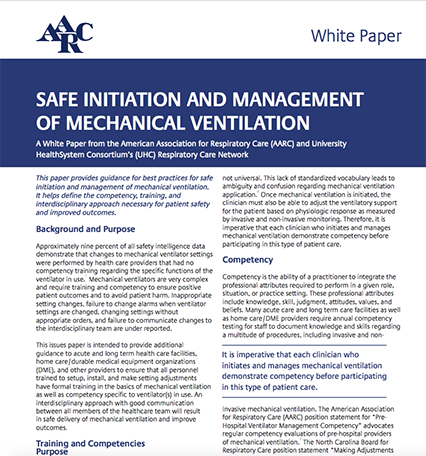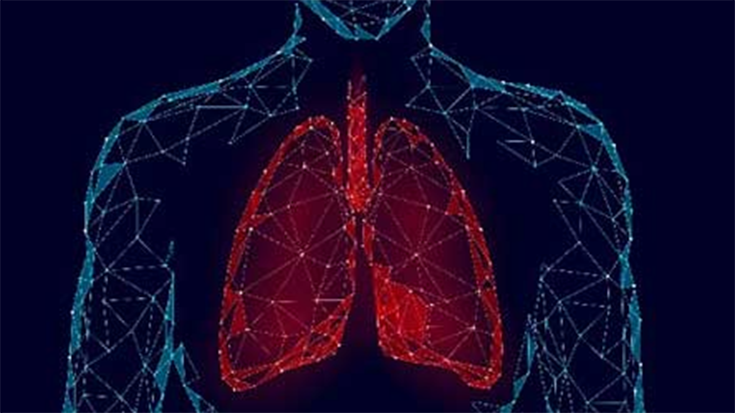 Safe Initiation and Management of Mechanical Ventilation White Paper Now Available
Safe Initiation and Management of Mechanical Ventilation White Paper Now AvailableA new white paper published by the AARC and the University HealthSystem Consortium (UHC) aims to improve the safe initiation and management of mechanical ventilation.
“The UHC represents major academic medical centers across the country, and thus has a huge influence on policies,” says AARC President Frank Salvatore, MBA, RRT, FAARC. “The AARC was pleased to be invited to work on this major new initiative to improve ventilator care.”
The paper, which grew out of reports that around 9% of all safety intelligence data show changes to mechanical ventilator settings were made by clinicians with no competency training in ventilator use, specifically outlines the factors involved in safe mechanical ventilation and defines the competency, training, and interdisciplinary approach required to improve outcomes.
Lisa Stampor, MBA, RRT, AE-C, manager of cardiopulmonary services at the University of Louisville Hospital in Louisville, KY, and co-chair of the UHC Respiratory Care Network who served as the liaison between the Association and the UHC during the project, says the AARC was essential to the process. “The AARC sets the standards for respiratory white papers and protocols. Having the support and expertise of the AARC allows the white paper to reach a broader audience.”
In order to ensure safe initiation and management of mechanical ventilation, the document recommends that —
- Continuing education to improve knowledge and skill in the initiation and management of mechanical ventilation should be developed to address identified knowledge gaps for all health care providers who initiate and maintain mechanical ventilation. These educational opportunities should incorporate interactive environments.
- Completion and documentation of competency or skills review should be performed annually and when new equipment is introduced.
- All parameter and alarm changes on ventilatory support devices should be clearly recorded, documented, and communicated to the entire health care team.
- Policies and procedures for ventilator alarms should be evidence-based, include clinical targets and directives regarding permission to modify alarms settings, identify the time required to respond to alarms, establish a list of parameters that require monitoring, identify competency assessment intervals, and identify the alarm priority level designation.
According to Stampor, the white paper is being disseminated to all UHC members and will be presented at the UHC RC meeting at the AARC Congress in October. “There has been a lack of resources for RT departments to use to develop ventilator safety policies,” says the UHC co-chair. “This paper will provide a much needed resource to guide policies that will ensure that our patients’ ventilators will be initiated and managed by those individuals that have proven competency on safe initiation and management of mechanical ventilation.”
Salvatore says RTs everywhere will benefit. “The increased focus on safe ventilator initiation and management that will result from the publication of this white paper will help ensure more facilities take a hard look at the competencies held by clinicians who are allowed to manage mechanical ventilation. As the most well trained clinicians in ventilator care, that bodes well for RTs, and most importantly, the ventilator patients who rely on their care.”
Email newsroom@aarc.org with questions or comments, we’d love to hear from you.













